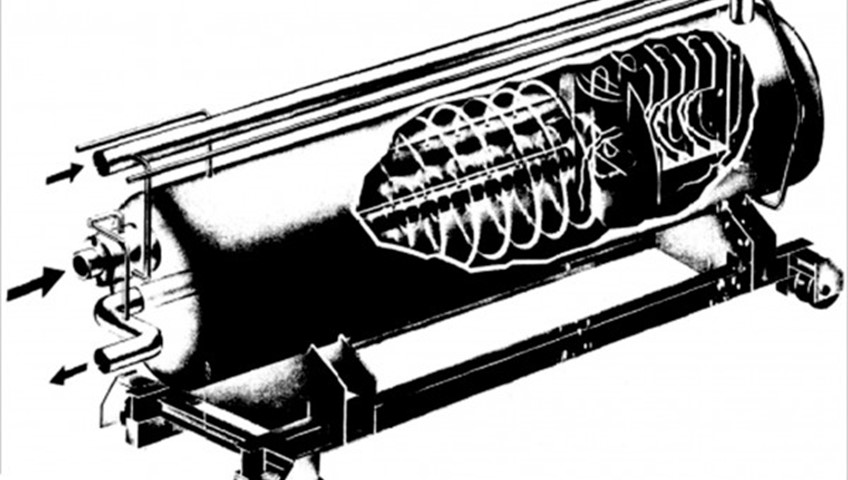
Decades-old scientific paper may hold clues to dark matter
No one really knows what dark matter is. Since the 1980s, theorists' best hunch has been that it consists of so-called weakly interacting massive particles, or WIMPs. If they exist, WIMPs would have a mass between one and 1000 times that of a proton. They would interact only through the feeble weak nuclear force—one of two forces of nature that ordinarily flex their muscle only within the atomic nucleus—and could disappear only by colliding and annihilating one another. So if the infant universe cooked up lots of WIMPs, enough of them would naturally survive to produce the right amount of dark matter today. But physicists have yet to spot WIMPs, which every now and then should ping off atomic nuclei in sensitive detectors and send them flying.
More recently, theorists have explored other ideas, such as self-interacting dark matter. This would consist of a particle, known as a χ (pronounced chi), with a mass between 1/1000 and one times that of the proton. Those particles would interact with one another through a force like the electromagnetic force, which produces light. That force would be conveyed by a massive particle called a dark photon—a dark matter version of a particle of light—that might "mix" slightly with the ordinary ones. So with some small probability, a dark photon might interact with ordinary charged particles such as electrons and atomic nuclei—just as ordinary photons do.
Self-interacting dark matter has attractive properties. In particular, a dark photon could also explain a particle physics puzzle. A particle called the muon appears to be very slightly more magnetic than theory predicts, and that discrepancy could be resolved if the muon interacts with dark photons lurking in the vacuum. However, χs and dark photons would be hard to detect with WIMP detectors; with their low masses, they couldn't whack a nucleus hard enough to create a signal.
But archival data already rule out dark photons with certain combinations of properties, argues Rouven Essig, a theoretical physicist at Stony Brook University in New York, and his colleagues. The data come from E137, a "beam dump" experiment that ran from 1980 to 1982 at SLAC National Accelerator Laboratory in Menlo Park, California. In the experiment, physicists slammed a beam of high-energy electrons, left over from other experiments, into an aluminum target to see what would come out. Researchers placed a detector 383 meters behind the target, on the other side of a sandstone hill 179 meters thick that blocked any ordinary particles. They then looked for hypothetical particles called axions, which would have pierced the earth and reached the detector—and saw none.
But electrons hitting the target should also have produced a beam of high-energy χs. A χ could have traversed the hill and interacted with an electron in the detector through a dark photon, blasting it into motion. The fact that E137 saw no recoiling electrons enabled Essig and his colleagues to nix some possible combinations of the dark photon's mass and the strength of its mixing with ordinary photons, as they report this week in Physical Review Letters. The results do not prove that the dark photon cannot exist at all, but they do put limits on its possible properties.
Other physicists have used archival data to test new dark matter theories. Last year, Philip Schuster, a theorist at the Perimeter Institute for Theoretical Physics in Waterloo, Canada, and a colleague used the result from another beam dump experiment at SLAC that ran in 1994 and 1995 to probe self-interacting dark matter. But the millicharge, or mQ, experiment was sensitive to χs sending atomic nuclei flying and set somewhat looser limits. "The electron-recoil limit looks a little better," Schuster says.
With certain assumptions, the analysis disfavors a dark photon with the properties needed to explain the muon's magnetism. But those assumptions could be loosened and the idea more thoroughly tested with a new experiment, Schuster says. He and roughly 80 other physicists hope to build a new beam dump experiment called BDX, which would look at 100 times as many events as E137 did. They have submitted a letter of intent to the Thomas Jefferson National Accelerator Facility in Newport News, Virginia, although the experiment could be staged elsewhere.
Compared with some particle physics experiments, BDX would be small and cheap, says Marco Battaglieri of Italy's National Institute for Nuclear Physics in Genoa and co-spokesman for the BDX team. "We are not talking about thousands of tons of detector," he says. "We are talking about a 1-ton detector." BDX would cost a few million dollars, Battaglieri says.
The study also suggests it's not so easy to dream up models of dark matter that don't run afoul of data already taken, Schuster says: "All of this has to be done in a very tight straitjacket."

